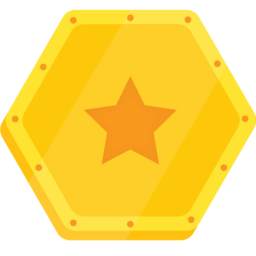DAMODAR SELVAM
成为会员时间:2019
黄金联赛
8470 积分
成为会员时间:2019

本課程概要說明解碼器與編碼器的架構,這種強大且常見的機器學習架構適用於序列對序列的任務,例如機器翻譯、文字摘要和回答問題。您將認識編碼器與解碼器架構的主要元件,並瞭解如何訓練及提供這些模型。在對應的研究室逐步操作說明中,您將學習如何從頭開始使用 TensorFlow 寫程式,導入簡單的編碼器與解碼器架構來產生詩詞。
本課程說明如何使用深度學習來建立圖像說明生成模型。您將學習圖像說明生成模型的各個不同組成部分,例如編碼器和解碼器,以及如何訓練和評估模型。在本課程結束時,您將能建立自己的圖像說明生成模型,並使用模型產生圖像說明文字。
本課程將介紹擴散模型,這是一種機器學習模型,近期在圖像生成領域展現亮眼潛力。概念源自物理學,尤其深受熱力學影響。過去幾年來,在學術界和業界都是炙手可熱的焦點。在 Google Cloud 中,擴散模型是許多先進圖像生成模型和工具的基礎。課程將介紹擴散模型背後的理論,並說明如何在 Vertex AI 上訓練和部署這些模型。
本課程將介紹注意力機制,說明這項強大技術如何讓類神經網路專注於輸入序列的特定部分。此外,也將解釋注意力的運作方式,以及如何使用注意力來提高各種機器學習任務的成效,包括機器翻譯、文字摘要和回答問題。
這是一堂入門級的微學習課程,旨在探討大型語言模型 (LLM) 的定義和用途,並說明如何調整提示來提高 LLM 成效。此外,也會介紹多項 Google 工具,協助您自行開發生成式 AI 應用程式。
這個入門微學習課程主要說明生成式 AI 的定義和使用方式,以及此 AI 與傳統機器學習方法的差異。本課程也會介紹各項 Google 工具,協助您開發自己的生成式 AI 應用程式。
This advanced-level quest is unique amongst the other catalog offerings. The labs have been curated to give IT professionals hands-on practice with topics and services that appear in the Google Cloud Certified Professional Data Engineer Certification. From Big Query, to Dataprep, to Cloud Composer, this quest is composed of specific labs that will put your Google Cloud data engineering knowledge to the test. Be aware that while practice with these labs will increase your skills and abilities, you will need other preparation, too. The exam is quite challenging and external studying, experience, and/or background in cloud data engineering is recommended. Looking for a hands on challenge lab to demonstrate your skills and validate your knowledge? On completing this quest, enroll in and finish the additional challenge lab at the end of the Engineer Data in the Google Cloud to receive an exclusive Google Cloud digital badge.
Incorporating machine learning into data pipelines increases the ability to extract insights from data. This course covers ways machine learning can be included in data pipelines on Google Cloud. For little to no customization, this course covers AutoML. For more tailored machine learning capabilities, this course introduces Notebooks and BigQuery machine learning (BigQuery ML). Also, this course covers how to productionalize machine learning solutions by using Vertex AI.
Processing streaming data is becoming increasingly popular as streaming enables businesses to get real-time metrics on business operations. This course covers how to build streaming data pipelines on Google Cloud. Pub/Sub is described for handling incoming streaming data. The course also covers how to apply aggregations and transformations to streaming data using Dataflow, and how to store processed records to BigQuery or Bigtable for analysis. Learners get hands-on experience building streaming data pipeline components on Google Cloud by using QwikLabs.
Data pipelines typically fall under one of the Extract and Load (EL), Extract, Load and Transform (ELT) or Extract, Transform and Load (ETL) paradigms. This course describes which paradigm should be used and when for batch data. Furthermore, this course covers several technologies on Google Cloud for data transformation including BigQuery, executing Spark on Dataproc, pipeline graphs in Cloud Data Fusion and serverless data processing with Dataflow. Learners get hands-on experience building data pipeline components on Google Cloud using Qwiklabs.
This quest of "Challenge Labs" gives the student preparing for the Google Cloud Certified Professional Cloud Architect certification hands-on practice with common business/technology solutions using Google Cloud architectures. Challenge Labs do not provide the "cookbook" steps, but require solutions to be built with minimal guidance, across many Google Cloud technologies. All labs have activity tracking, and in order to earn this badge you must score 100% in each lab. This quest is not easy and will put your Google Cloud technology skills to the test! Be aware that while practice with these labs will increase your knowledge and abilities, additional study, experience, and background in cloud architecture is recommended to prepare for this certification. Complete this quest to receive an exclusive Google Cloud digital badge.
The two key components of any data pipeline are data lakes and warehouses. This course highlights use-cases for each type of storage and dives into the available data lake and warehouse solutions on Google Cloud in technical detail. Also, this course describes the role of a data engineer, the benefits of a successful data pipeline to business operations, and examines why data engineering should be done in a cloud environment. This is the first course of the Data Engineering on Google Cloud series. After completing this course, enroll in the Building Batch Data Pipelines on Google Cloud course.
In this introductory-level course, you get hands-on practice with the Google Cloud’s fundamental tools and services. Optional videos are provided to provide more context and review for the concepts covered in the labs. Google Cloud Essentials is a recommendeded first course for the Google Cloud learner - you can come in with little or no prior cloud knowledge, and come out with practical experience that you can apply to your first Google Cloud project. From writing Cloud Shell commands and deploying your first virtual machine, to running applications on Kubernetes Engine or with load balancing, Google Cloud Essentials is a prime introduction to the platform’s basic features.
This course introduces the Google Cloud big data and machine learning products and services that support the data-to-AI lifecycle. It explores the processes, challenges, and benefits of building a big data pipeline and machine learning models with Vertex AI on Google Cloud.
This fundamental-level quest is unique amongst the other quest offerings. The labs have been curated to give IT professionals hands-on practice with topics and services that appear in the Google Cloud Certified Professional Cloud Architect Certification. From IAM, to networking, to Kubernetes engine deployment, this quest is composed of specific labs that will put your Google Cloud knowledge to the test. Be aware that while practice with these labs will increase your skills and abilities, we recommend that you also review the exam guide and other available preparation resources.
This course version is for non-English only. If you wish to take this course in English, please enroll here: Elastic Google Cloud Infrastructure: Scaling and Automation. If you wish to take it in another language, change your language in settings to see availability.
這堂隨選密集課程會向參加人員說明 Google Cloud 提供的全方位彈性基礎架構和平台服務,尤其側重於 Compute Engine。這堂課程結合了視訊講座、示範和實作研究室,可讓參加人員探索及部署解決方案元素,例如網路、虛擬機器和應用程式服務等基礎架構元件。您會瞭解如何透過控制台和 Cloud Shell 使用 Google Cloud。另外,您也能瞭解雲端架構師的職責、基礎架構設計方法,以及具備虛擬私有雲 (VPC)、專案、網路、子網路、IP 位址、路徑和防火牆規則的虛擬網路設定。
這堂隨選密集課程會向參加人員說明 Google Cloud 提供的全方位彈性基礎架構和平台服務,並將重點放在 Compute Engine。這堂課程結合了視訊講座、示範和實作研究室,可讓參加人員探索及部署解決方案元素,例如網路、系統和應用程式服務等基礎架構元件。另外,這堂課也會介紹如何部署實用的解決方案,包括客戶提供的加密金鑰、安全性和存取權管理機制、配額與帳單,以及資源監控功能。
這堂課程可讓參加人員瞭解如何使用確實有效的設計模式,在 Google Cloud 中打造相當可靠且效率卓越的解決方案。這堂課程接續了「設定 Google Compute Engine 架構」或「設定 Google Kubernetes Engine 架構」課程的內容,並假設參加人員曾實際運用上述任一課程涵蓋的技術。這堂課程結合了簡報、設計活動和實作研究室,可讓參加人員瞭解如何定義業務和技術需求,並在兩者之間取得平衡,設計出相當可靠、可用性高、安全又符合成本效益的 Google Cloud 部署項目。
This content is deprecated. Please see the latest version of the course, here.